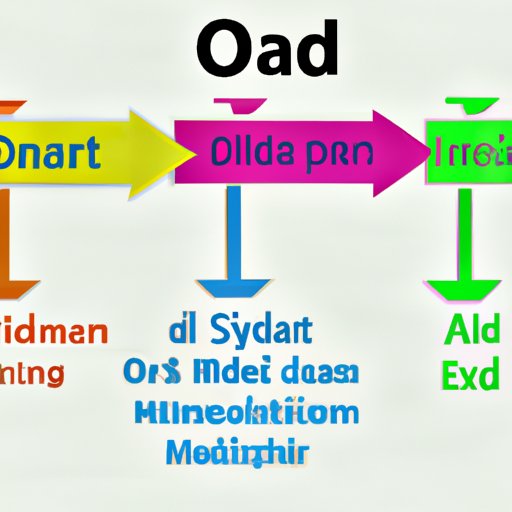Introduction
In recent years, intermittent fasting has become increasingly popular as a way to manage weight and improve overall health. One particular type of intermittent fasting, known as the OMAD diet or “one meal a day” diet, is gaining traction as an effective and sustainable approach to weight loss.

A Definition of the OMAD Diet
As its name implies, the OMAD diet consists of eating just one meal per day. The meal can be any size and should include all the necessary macronutrients, such as protein, carbohydrates, and fat. The idea behind the OMAD diet is to restrict your eating window to a single hour each day, while still eating a balanced and nutritious meal.

Benefits of the OMAD Diet
The OMAD diet has several potential benefits, including:
- Weight loss: Restricting your eating window to one hour per day may help reduce your overall calorie intake, which could lead to weight loss.
- Increased mental clarity: Intermittent fasting has been linked with improved focus and concentration.
- Improved digestion: Eating one large meal per day can give your digestive system a rest, which may help reduce bloating and improve digestion.
- Reduced inflammation: Studies suggest that intermittent fasting can help reduce inflammation in the body.

A Comprehensive Guide to the OMAD Diet
The OMAD diet is not simply a matter of eating one meal per day. To maximize the benefits and minimize the risks, there are certain guidelines you should follow.
What Can You Eat on the OMAD Diet?
On the OMAD diet, you should aim to eat a balanced meal that includes all three macronutrients: protein, carbohydrates, and fat. Protein-rich foods like lean meats, fish, eggs, and tofu are great choices, as are complex carbohydrates like whole grains and legumes. Healthy fats like nuts, seeds, and avocado can also be included in your meal.
How Much Can You Eat on the OMAD Diet?
When it comes to portion size, the OMAD diet does not require that you restrict the amount of food you consume. As long as you stick to nutritious and healthy foods, you can eat as much as you need in order to feel satisfied. However, it’s important to remember that overeating can cause uncomfortable symptoms like bloating, so it’s best to practice mindful eating.
What Is Intermittent Fasting and How Does It Relate to the OMAD Diet?
Intermittent fasting is an eating pattern that alternates between periods of eating and fasting. The OMAD diet is a type of intermittent fasting in which you fast for 23 hours each day and then eat your one meal within a 1-hour window. This type of intermittent fasting has been shown to have numerous health benefits, including improved metabolic health, increased weight loss, and reduced inflammation.
Pros and Cons of the OMAD Diet
Like any diet or lifestyle change, the OMAD diet has both advantages and disadvantages. Here are some of the pros and cons of this approach.
Pros of the OMAD Diet
- May help you lose weight: By restricting your eating window to one hour per day, the OMAD diet can help you reduce your calorie intake and potentially lead to weight loss.
- Improves mental clarity: Studies have found that intermittent fasting can improve focus and concentration.
- Easy to follow: The OMAD diet is easy to understand and implement, making it an accessible option for people who want to try intermittent fasting.
- Flexible: Unlike other diets, the OMAD diet does not require you to count calories or restrict certain types of food. You can eat whatever you like during your one-hour eating window.
Cons of the OMAD Diet
- Can be difficult to sustain: For some people, it can be challenging to stick to the OMAD diet for an extended period of time.
- May cause nutrient deficiencies: Because you’re only eating one meal per day, you may be missing out on essential vitamins and minerals.
- Can increase stress levels: Restricting your eating window to one hour can put additional stress on your body, which can have negative effects on your health.
- Not suitable for everyone: The OMAD diet is not recommended for pregnant women, children, or people with certain medical conditions.
Meal Planning Tips for the OMAD Diet
Once you’ve decided to try the OMAD diet, there are a few strategies you can use to ensure success. Here are some tips for meal planning and preparation.
How to Prep and Prepare Meals
To make the OMAD diet easier to follow, it’s a good idea to prepare your meals in advance. This will help ensure that you have a nutritious meal ready when it’s time to eat. Consider cooking several meals at once and storing them in the refrigerator or freezer for easy access.
Grocery Shopping Tips
When grocery shopping for the OMAD diet, it’s important to stock up on healthy, nutrient-dense foods. Make sure to buy plenty of fresh fruits and vegetables, as well as lean proteins, whole grains, and healthy fats. Avoid processed foods and sugary snacks, as these can sabotage your efforts.
Meal Timing Strategies
The OMAD diet requires you to eat all your meals within a 1-hour window. To make this easier, consider scheduling your meal time in advance. If you know exactly when you’ll be eating, you’ll be less likely to stray from the plan.
What Does the Science Say About the OMAD Diet?
Although the OMAD diet is becoming increasingly popular, there is limited scientific research on its long-term effects. Here’s what the current evidence says about this approach.
Potential Benefits of the OMAD Diet
Research suggests that the OMAD diet may offer a number of potential benefits, including improved metabolic health, increased fat burning, and reduced inflammation. In one study, researchers found that participants who followed the OMAD diet for four weeks experienced a reduction in body weight and waist circumference, as well as improvements in blood pressure, cholesterol, and triglyceride levels.
Potential Risks of the OMAD Diet
Although the OMAD diet may provide some health benefits, it can also pose some risks. These include nutrient deficiencies, dehydration, and increased stress levels. Additionally, if you have a history of disordered eating, it’s best to avoid this approach.
How to Get Started with the OMAD Diet
If you’re interested in trying the OMAD diet, it’s important to start off on the right foot. Here are some tips for getting started.
Setting Goals
Before beginning the OMAD diet, it’s important to set realistic goals. Think about why you’re interested in this approach and what results you hope to achieve. Setting clear goals can help keep you motivated and on track.
Making a Plan
Once you’ve set your goals, it’s time to make a plan. Think about how you’ll structure your eating window and what types of meals you’ll be preparing. Having a clear plan can help make the transition to the OMAD diet easier.
Tracking Progress
It’s also important to track your progress as you go. Keep a journal to document how you’re feeling and any changes you notice. This can help you identify areas where you may need to make adjustments.

Common Mistakes to Avoid When Doing the OMAD Diet
When doing the OMAD diet, it’s important to be aware of common mistakes that can derail your efforts. Here are some of the most common errors to avoid.
Skipping Meals
One of the biggest mistakes you can make on the OMAD diet is skipping meals. It’s important to stay consistent and eat your one meal each day, even if you don’t feel hungry. Skipping meals can lead to feelings of deprivation and can ultimately lead to binging.
Not Drinking Enough Water
Staying hydrated is key when doing the OMAD diet. Make sure to drink plenty of water throughout the day to keep your body functioning properly. Aim for at least 8 glasses per day.
Eating Too Much at Once
It’s tempting to overindulge during your one-hour eating window, but it’s important to practice moderation. Eating too much at once can lead to unpleasant symptoms like bloating and indigestion.
Recipes for a Successful OMAD Diet
To make the OMAD diet successful, it’s important to have some delicious and nutritious recipes on hand. Here are some ideas for breakfast, lunch, and dinner.
Breakfast Recipes
- Overnight oats with berries and nuts
- Fried egg and avocado toast
- Smoothie bowl with banana, almond butter, and chia seeds
- Scrambled eggs with spinach and feta cheese
Lunch Recipes
- Grilled chicken and quinoa salad
- Tuna and white bean wrap
- Roasted vegetable and hummus wrap
- Vegetable stir-fry with tofu
Dinner Recipes
- Salmon and roasted vegetables
- Turkey burger with sweet potato fries
- Vegetarian chili with quinoa
- Shrimp and broccoli stir-fry
Conclusion
The OMAD diet is a popular form of intermittent fasting that involves eating one meal per day. This approach has the potential to provide a number of health benefits, including weight loss, improved mental clarity, and reduced inflammation. However, it’s important to remember that the OMAD diet is not suitable for everyone and should be approached with caution. With proper planning and preparation, however, the OMAD diet can be a safe and effective way to reach your health and wellness goals.
(Note: Is this article not meeting your expectations? Do you have knowledge or insights to share? Unlock new opportunities and expand your reach by joining our authors team. Click Registration to join us and share your expertise with our readers.)
